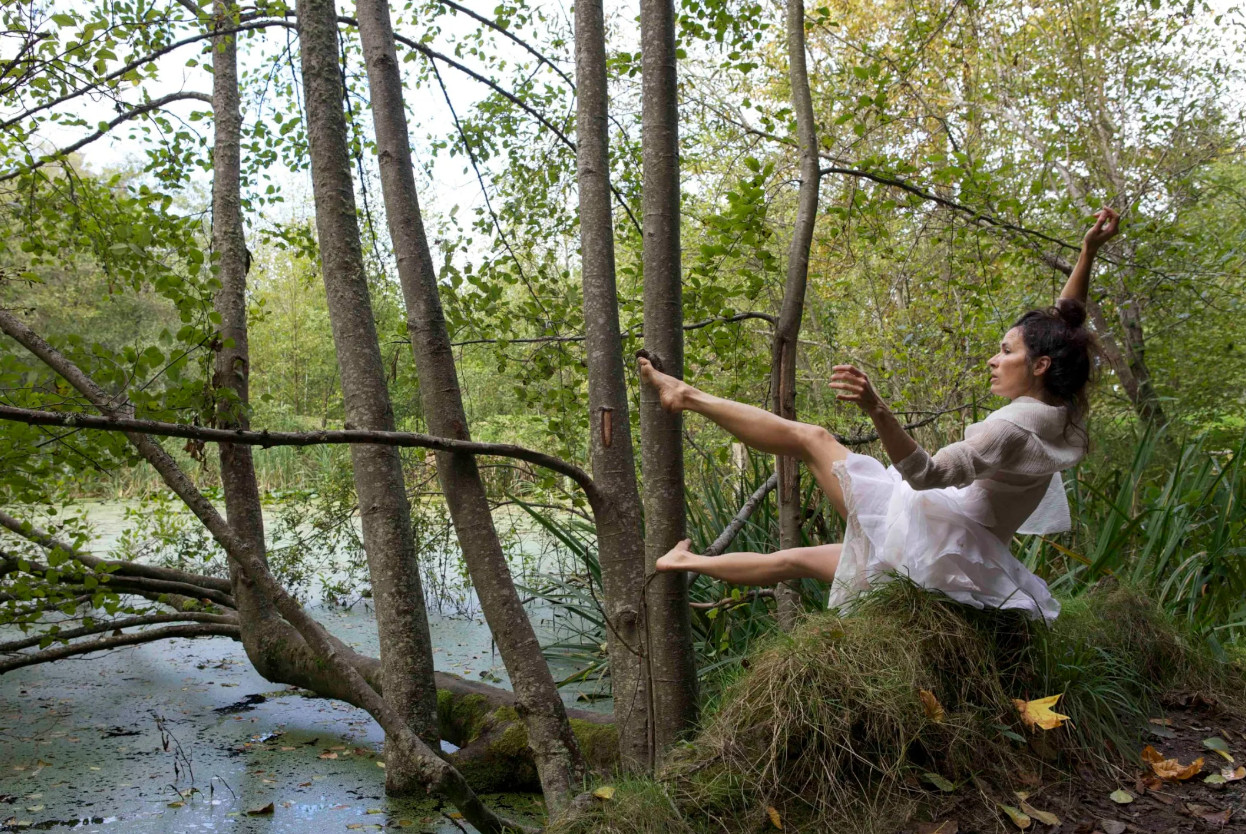As a way of providing some background context for the “Rituals for Earthly Survival” project and the idea of dancing with nature, this blog post delves into the profound relationship between Butoh, an avant-garde Japanese dance form, and the natural world. Emerging from the ashes of post-war Japan, Butoh has evolved into a practice that not only challenges traditional aesthetics but also embraces shamanic rituals and ecological consciousness. By exploring the intricate connections between movement, nature, and spirituality, Butoh offers a unique pathway for reconnecting and harmonizing with the environment. This dance form embodies the cycles of life, death, and renewal, providing a powerful medium for fostering ecological awareness and healing. Join us as we uncover how Butoh serves as a ritualistic practice for earthly survival, blending ancient traditions with contemporary ecological mindfulness.
Historical Development of Butoh
Butoh emerged in post-war Japan, a period marked by social and ecological crisis. The founders, Tatsumi Hijikata and Kazuo Ohno, created Butoh as a reaction against both traditional Japanese aesthetics and Western modern dance forms. Hijikata’s first Butoh performance, “Forbidden Colors,” characterized by its grotesque and taboo-breaking content, set the tone for Butoh’s explorative nature.
Mary Wigman, a German modern dance pioneer, significantly influenced Butoh. Wigman was inspired by Japanese Noh Theater, which utilizes masks as transformative elements. Her works, including “Ceremonial Figure,” incorporated these influences, emphasizing the connection between human emotions and spiritual transformation. Butoh adapted Wigman’s techniques, focusing on natural, primal movements to express raw human experiences.
Butoh and Shamanic Practices
Butoh shares numerous similarities with shamanic practices. Both involve rituals connecting the physical and spiritual realms, often through transformative and cathartic performances. Hijikata and Ohno channeled personal and spiritual entities in their dances, mirroring shamanic traditions that evoke spirits and the afterlife.
The concept of “narikiru,” or becoming one with an element, is central to Butoh and Zen Buddhism, emphasizing a deep connection with the environment and the dissolution of the self. This approach reflects shamanic rituals seeking harmony with the earth and cosmos, using the body as a conduit for spiritual and ecological connections.
Butoh and Nature
Embodiment and Natural Elements:
Butoh is fundamentally an ecological praxis that cultivates an awareness of interconnectedness with the natural world. The dance form emphasizes the significance of the interval (ma) in creating a dialogue between the dancer and their environment, promoting an embodied mindfulness and ecological consciousness.
Butoh performances often take place in natural settings, enhancing the dancer’s attunement to the environment. This practice draws on traditional Japanese aesthetics and philosophical concepts, such as Wabi-Sabi (the beauty of imperfection and impermanence) and Mono no Aware (an awareness of the transience of things), fostering a deep connection with the natural world.
Re-sensing Movement:
Exercises in Butoh, such as “Letting Be” and “Returning to Source,” encourage dancers to connect deeply with their environment, embodying a sense of unity with nature. These exercises involve slowing down, becoming aware of one’s surroundings, and integrating movements with the natural world. This somatic awareness helps dancers to embody natural processes and rhythms, such as growth, decay, and renewal, aligning with ecological cycles.
Butoh emphasizes the body as a site of transformation, where movements arise organically from within, reflecting natural and unrefined human motions. This approach aims to strip away societal constructs and reconnect with the essential, natural state of the human body, promoting a sense of harmony with nature.
Natural Processes and Rituals:
Butoh incorporates elements that mimic natural processes, fostering a holistic view of human and ecological interconnectedness. Performances often evoke themes of decay and regeneration, embodying the cycles of nature through movement. The dance form’s slow, deliberate movements create a sense of timelessness, allowing dancers to embody a state of being that transcends linear time and resonates with natural rhythms.
This practice draws on traditional Japanese rituals and Shinto beliefs, which emphasize the sacredness of nature and the presence of kami (spirits) in natural elements. By integrating these traditions, Butoh offers possibilities for exploring reconnection and harmonization with nature through movement.
Techniques and Practices:
Specific techniques in Butoh, such as the Butoh-walk, involve a low center of gravity and a close connection to the ground, symbolizing a return to the earth and the primal state of being. This technique, along with other somatic practices, helps dancers to embody the cycles of nature and fosters a deep ecological awareness.
Butoh also incorporates traditional Japanese aesthetics, such as the use of white body paint, which symbolizes both the presence and absence of life, reflecting natural processes of birth, death, and rebirth. This aesthetic choice enhances the dancer’s connection to nature and emphasizes the transient and transformative aspects of existence.
Contemporary Applications:
In contemporary contexts, Butoh continues to evolve, with dancers and choreographers around the world integrating environmental themes and practices into their performances. These practices often involve site-specific performances in natural environments, promoting a direct engagement with ecological issues and fostering a deeper understanding of the human-nature relationship.
Butoh’s emphasis on yielding, descent, and transformation aligns with the cyclical and regenerative aspects of nature, fostering a holistic and inclusive view of human and ecological interconnectedness. This approach not only highlights the importance of ecological awareness but also offers a pathway for healing and transformation through embodied practices.
Conclusion
Butoh, as a dance form, embodies a unique synthesis of shamanic practices, historical influences, and a profound connection to nature. Through its transformative and ecological approach, Butoh fosters an embodied awareness and kinship with the more-than-human world. This synthesis highlights Butoh’s capacity to integrate cultural elements, address contemporary issues, and maintain its core principles of transformation and natural connection.
References:
1. “The Butoh Body Performed: Aesthetic and embodiment in butoh dance” by J. Brad Breiten.
2. “Performing Everyday Things: Ecosomatic Threads of Butoh, Phenomenology, and Zen” by Sondra Fraleigh.
3. “Non-performing: Liminality and Embodiment in Butō Dance” by Helena Kantinkoski.
4. “Embodied Ecologies: Moving Through Crisis” by Lila Klatz.
5. “Butoh: Metamorphic Dance and Global Alchemy” by Sondra Fraleigh (Reviewed by Holly A. Blumner).
6. “A Re-Creation of Mary Wigman’s Ceremonial Figure Emphasizing the Noh Theater and Butoh Elements” by Ginny Whaley.
Photograph from https://naturemoves.com/ and features dancer/director Maureen Momo Freehill, MFA of Nature Moves.


Leave a Reply